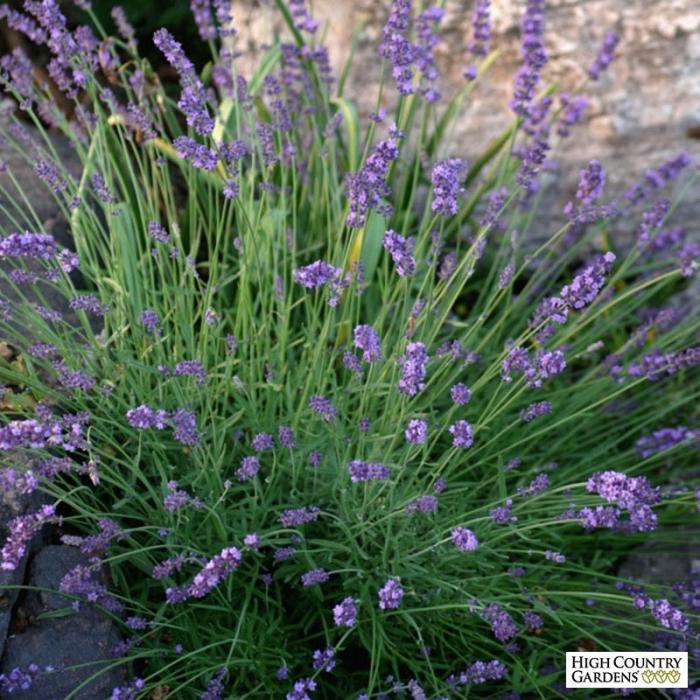Lavandula angustifolia 'Sharon Roberts'
Sharon Roberts English Lavender

Description
Lavandula angustifolia Sharon Roberts is an outstanding twice blooming English Lavender with spikes of bicolored lavender-blue and gray-green foliage. This intensely fragrant English Lavender can bloom twice annually when promptly deadheaded after its early summer flush of flowers. A Nichols Garden Nursery introduction, it has gorgeous deep lavender flowers and dark blue calyxes on medium length flower spikes. In the garden 'Sharon Roberts' thin flower spikes give the plant a finely textured appearance that is distinct from other English Lavender types like 'Graves' and 'Hidcote Superior'. (Cutting propagated.) Lavender are sun-loving plants that thrive in hot weather and grow best in arid climates. Lavender plants will be taller and wider in mild winter, hot summer climates. The same varieties when grown in cold (zone 5-6) winter climates tend to be more compact. Lavender plants require two-to-three growing seasons to reach mature size. Plant in full sun with good air circulation. Plant into well drained soil. Compost-enriched garden loam is alright in drier climates, sandy or gravel soil is best in moister climates. Heavy, poorly-drained clay soils will be fatal. Select a raised or sloped bed, or a planting site against a hot wall or along a cement/asphalt walk or driveway where the reflected heat keeps growing conditions hotter and drier. New transplants need regular watering. Don't let the plants get too dry. Supplemental watering can be greatly reduced the second growing season as the plants become established. When using drip irrigation, place the emitter off to the side of the plant, not right on the root ball to avoid overwatering of mature plants. Fertilize once annually in the fall with a top dressing of Yum Yum Mix. Mulch with gravel or pine needles in arid climates. In moister climates mulching with gravel will protect the crown from excessive moisture and soil splashed onto the foliage.
Plant Type
Perennial, Herb
Height Range
1-3'
Width Range
1-3'
Flower Color
Blue, Lavender
Flower Season
Summer
Leaf Color
Grey Green
Bark Color
n/a
Fruit Color
n/a
Fruit Season
n/a
Sun
Full
Water
Low
Growth Rate
Moderate
Soil Type
Sandy, Clay, Loam, Rocky, Unparticular
Soil Condition
Average
Soil pH
Neutral
Adverse Factors
Attracts Bees
Design Styles
English Cottage, Meadow, Mediterranean, Ranch, Seascape, Spanish
Accenting Features
Fragrance, Showy Flowers
Seasonal Interest
Summer
Location Uses
Entry, Perennial Border, Patio, Raised Planter, Walkways, With Rocks
Special Uses
Container, Cut Flowers, Mass Planting
Attracts Wildlife
Hummingbirds, Butterflies
Water Saving Tip:
Change spray sprinklers to low-flow bubbler or drip systems.
Shrubs and trees are ideal candidates for this type of irrigation because the water is applied directly to the root zones.